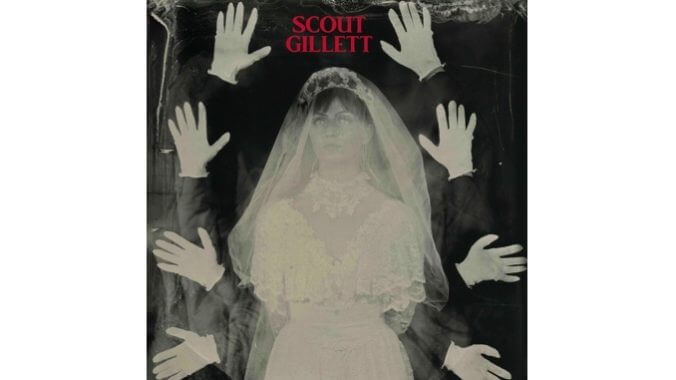Scout Gillett Fends Off Ghosts of Past and Present on no roof no floor

In the heat of a situation as frenzied as a high-stakes record store dig, people will say things that stick with you. A few years ago, at a store I visit regularly, I mentioned to someone behind the counter that I wanted to buy a copy of Wire’s 1978 sophomore album, Chairs Missing. A man perusing the table nearby snapped his head up to look at us. I couldn’t remember his face now if I tried, but he gestured towards me. “You’ve heard that one before, yeah?” he asked. I nodded, preparing myself for the impromptu game of 20 Questions that some older guys in places like this still play with people who don’t look like them. Instead of throwing an onslaught of trivia my direction, he just nodded and looked away, sighing like just the thought of Colin Newman’s cryptic, almost alien lyrics shook him to his core. With the conviction that he was sharing the most obvious truth ever spoken, he said, “That album is a haunted house” (not “sounds like,” just “is”), and turned his attention back to the crates. End of conversation.
That man and his ominous eight-syllable album review planted themselves firmly in my mind as I listened to no roof, no floor, the full-length debut from Missouri-born, Brooklyn-based singer/songwriter Scout Gillett. It’s impossible to compare the albums themselves, because every element of Gillett’s work that haunts the listener is diametrically opposed to every element with a similar effect on the Wire record. Chairs Missing holds its breath, offering one minimal, mysterious vignette after the next as biting guitars and synths pull the scenery taut; even at its most accessible, you sense its walls closing in on you, refusing room for oxygen to flow. In contrast, Gillett aims to create so much open space, you could drown in it. Her Americana-tinged brand of indie folk matches the expanse of the empty prairie ahead of her, leaving no walls to even imagine yourself clawing at. It occurred to me that the haunted house Gillett built wasn’t haunted at all, but completely abandoned. In a way, that’s even more terrifying.
The story of no roof, no floor starts at the dawn of the pandemic, when Gillett traveled from her adopted home of New York back to her hometown to recenter herself. Upon arrival, she found she no longer recognized the place she’d left behind in 2017, feeling, in her own words, “homesick for a home that no longer seemed to exist” as she watched friends and family struggle with addiction and hardship brought on by lockdown.
As such, her writing clearly reflects an effort to both assuage and surrender, bandaging wounds as she realizes only she can help herself. When it came time to record the material, she and co-producer Nick Kinsey relocated to a barn in Upstate New York with her band, capturing each vocal take “in the pitch black darkness of night, void of light pollution.” It turns out I wasn’t far off in picturing Gillett singing each track in a hollowed-out house of her own creation, letting the vitality of the sound rattle the bones of the rotting structure around her.
The album provides the first major taste of Gillett’s songwriting following the release of her one to ten EP, featuring four covers and one original song, earlier this year. It garnered comparisons to Gillett’s friend Sharon Van Etten (who gets a shoutout in the album’s liner notes) and Angel Olsen—the latter of whom, coincidentally, also shared a meditative album with country-inspired touches about multiple life-changing events colliding earlier this year. On paper, the parallels make sense, in part because Gillett and Olsen share a similarly emotive vocal quality that allows them to delicately flutter from word to word one second and swallow a room of any depth with their cry the next. However, where Olsen’s Big Time works in broad, cinematic strokes, not shying from grandeur when the scene calls for it, no roof, no floor works in wounded restraint, opting to remain spare as it alternates between menacing and pulsing with life.
-

-

-

-

-

-

-

-

-

-

-

-

-

-

-

-

-

-

-

-

-

-

-

-

-

-

-

-

-

-

-

-

-

-

-

-

-

-

-

-








































